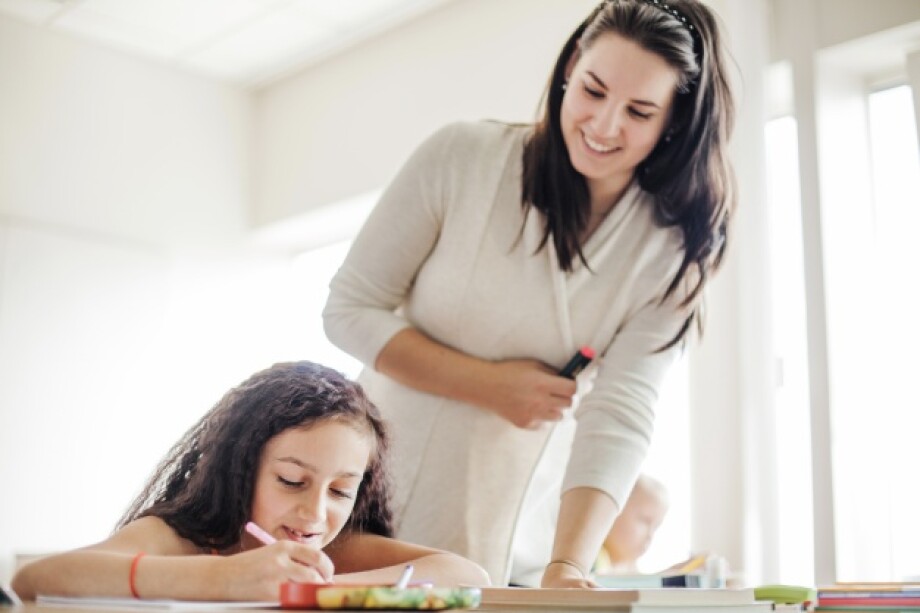What is TPR and how do we use it?
Many early childhood ESL teachers should know and practise TPR, Total Physical Response, in their lessons. TPR is very simple and actually is quite exciting. The teacher gives a command using physical body movements, the student picks up on the instruction, makes the word association and responds back to the teacher in the same matter, either verbally or by a gesture.
Remember that gestures and TPR are two different things!
Gestures are a one-way mode of communication where the teachers convey a message verbally and reinforce that message then physically. All the student has to do, is simply watch and listen.
TPR, on the other hand, is a two-way mode of communication. It all starts with a gesture, the teacher conveys a message verbally and reinforces that message physically, however, the student is then expected to respond to the communication by verbal or physical means, gesture or mimicking the teacher.
So how do we use TPR for complete success in our “online” classroom?
The first rule of thumb is to be as consistent with your visual commands as possible. It’s important to find commands which you find useful and can easily remember.
When can I use TPR?
The great thing about TPR is that you can use it to not only to teach but also practise things!
- When teaching vocabulary relating to actions/verbs (smile, laugh, jump, pain, movement).
- When introducing and teaching tenses such as past/present/future example, I love to eat breakfast.
- Classroom instructions such as “draw a circle around the correct answer”
- General and imperative instructions such as “sit down”
- Telling and sharing stories.
The thing I personally enjoy about incorporating TPR in my classroom is that brings my online environment which can be pretty impersonal, back to life! TPR can be adapted for any situation and gets the student excited and motivated to learn.
But why do you think we should use TPR? Is there a real benefit?
Well yes, there is a huge benefit unless you enjoy speaking to a wall and an elementary level student not understanding a word you are saying! Not only does gestures or TPR aid in student concentration but also enables language retention.
When you use TPR is it:
- Memorable for your student. It enables them to remember new phrases and words. Not all students are the same, some actually learn better when they are “active” in class and use movement, even if the movement is as basic as using their arms, hands, and fingers.
- TPR has been proven to be effective with teenagers, young learners, and even elementary level adults! It’s not as silly as it seems, and no you won’t look like a clown!
- When your student “gets it” it truly is the most rewarding feeling, you should try it!
- It ensures that your future classes go more smoothly as it involved not only the left brain but also the right brain!
- Lastly, you don’t have to spend hours preparing special materials which essentially is not needed. Your physical actions will come across as effectively, the student will understand the meaning and then use the target language.
TPR is so much more than just eliciting a response, it, in fact, it is effective communication between yourself and the student.
How else can I use TPR?
For one, you can use realia to elicit a response from your student. Example, a multi-colored ball is my favourite. I use it to elicit colors as a warm-up. I show the student the ball, show them the “what” sign and point at the ball, then I say the words “what is this?”. Should the student say “ball”, I encourage full sentences AFTER praising the student for naming the object correctly. “It is a ball”.
Make sure to use the correct TPR by pointing to your mouth, use one finger per word and cup your ear, “this / is / a / ball” then keep silent, cup your ear, show to your mouth again and use the first finger to elicit the first word of the sentence “this”. If the student can not remember the word, you can also mouth it silently.
Now you move on to the colors on the ball, show the “what” sign, point to the color, scratch your head, wait for an answer. Be patient! If there is no answer, mouth the color “red” if the student says “red” again encourage full sentences by saying “it is red” and follow the same procedure as above. Do not deviate from it as the student will miss your visual ques going forward.
There are so many different ways to incorporate TPR, here are just a few I enjoy:
— Action songs
— Simon Says
— Sensible animal mimes
— Sensible object mimes
So in a nutshell, I do believe you teachers get the gist of it, or you wouldn’t be here teaching. I’ll leave you with this:
Find TPR methods which work for you, which you can remember!
Keep it as simple as possible.
Use realia where you can.
Be precise, consistent!
And lastly, be patient! I promise it pays off!






 Вероника Аветисян
Вероника Аветисян 
 Маргарита Аветисян
Маргарита Аветисян 


